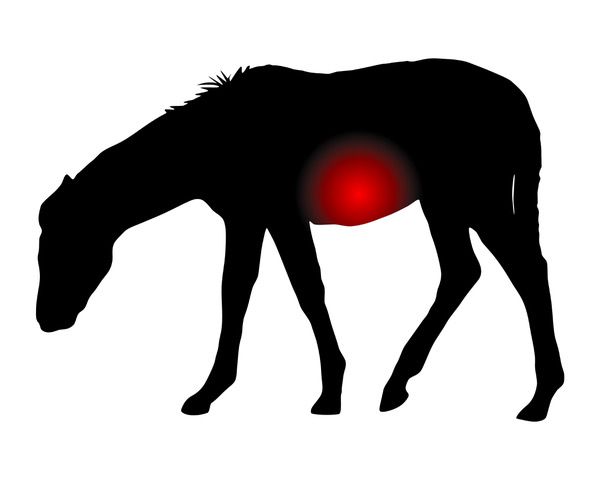By surgically implanting microchips in the large colon of a horse, researchers gathered information about the secret life of this organ, including its role in colic, leading them to contemplate studies aimed at colic prevention.*
Currently, mechanisms and risk factors contributing to colic, such as large intestinal displacements, impactions, torsions, and entrapments, remain unknown. As a result, colic stemming from the large intestine remains an extremely common cause of morbidity and mortality in horses.
“Frequency of colic as a result of large intestinal abnormalities is at least partly due to the high mobility of a substantial portion of the organ. Many regions are not fixed to the body well and instead float freely within the abdominal cavity. This is particularly true for the pelvic flexure—the region of the large intestine where the ‘bottom’ and ‘top’ sections of the left colon meet one another in a hairpin turn,” explained Ashley Fowler, Ph.D., a nutritionist and director of research at Kentucky Equine Research.
Thus, studying the mobility of the large intestine, including the pelvic flexure, could provide important insight into colic prevention. The goals of the study were to: (1) confirm that microchips could be successfully embedded into the wall of the large intestine, and (2) verify chips could subsequently be detected using a microchip scanner transcutaneously, or from the outside of the horse’s body.
Equine surgeons placed 12 microchips at various locations throughout one horse’s large intestine, including at the pelvic flexure. The horse was then scanned one to three times daily for a one-month period.
Most microchips (10 of 12, 83%) remained in the wall of the large intestine postsurgically, and they were identified transcutaneously for the duration of the study. Individual sections of the large colon had variable mobility, with some remaining in the same anatomic location consistently, but others moved more frequently around the abdominal cavity.
“The researchers reported that the pelvic flexure could be found on the opposite side of the abdomen within a two-hour window. Specifically, the pelvic flexure was detected 69% of the time the horse was scanned and was identified in the left abdomen, where one would expect it, about half of those times. The pelvic flexure was also identified on the right side of the abdomen and in the lower part of the abdomen,” Fowler said.
Despite a high degree of movement of the large colon, the horse never exhibited signs of colic, suggesting to researchers the level of movement that results in colic requires further study.
According to the researchers, “The development of this model to characterize the location of the large colon is critical to recognizing the mechanisms of colonic displacement as well as the effects in management, feed, gastric distension, and various activities on the movement of the colon.”
Fowler added, “This type of method-development research will help us better understand risk factors and perhaps prevention strategies for certain types of colic, such as colon displacement and torsion.”
Based on our current knowledge of colic prevention, horse owners are encouraged to maximize the health of the hindgut, where fermentation occurs.
“Horses should have access to forage throughout the day, and diet changes should be made slowly to support hindgut health. Feeding a hindgut buffer such as EquiShure may also be beneficial for preventing hindgut acidosis,” Fowler said.
*Steward, S.K., H.M. McKee, A.M. Watson, M.D. Salman, and D.M. Hassel. 2022. Transcutaneous detection of intramural microchips for tracking the migration of the equine large colon: A pilot study. Animals (Basel) 12(23):3421.











